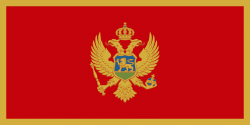Igalo
Igalo (, Игало) is a small town in the Herceg Novi Municipality of Montenegro. It is accessible via the E65/E80 north headed to Dubrovnik, Croatia. According to the 2003 Census, it has a population of 3,754. The town adjoins Herceg Novi and is administratively divided leaving no clear division between the towns.
Located on the slopes of Mount Orjen, Igalo is regionally famous for the "DR Simo Milošević" Institute, a Mediterranean themed health spa which formerly attracted many tourists. Architect Aleksandar Đorđevic built this Institute. The institute is one of the unique hospitals and spas in the Balkans. Though the effects of the Yugoslav Wars limited Igalo's attractiveness as a tourist destination, it nonetheless remains a popular resort for tourists from the surrounding region.
Former Yugoslav leader Tito had his summer villa in this town. This villa was subsequently used to host the last meeting between Slobodan Milošević (then President of Serbia) and Franjo Tuđman (then President of Croatia) amid the early stages of the Yugoslav Wars and fighting between Serbs and Croats throughout Croatia.
Located on the slopes of Mount Orjen, Igalo is regionally famous for the "DR Simo Milošević" Institute, a Mediterranean themed health spa which formerly attracted many tourists. Architect Aleksandar Đorđevic built this Institute. The institute is one of the unique hospitals and spas in the Balkans. Though the effects of the Yugoslav Wars limited Igalo's attractiveness as a tourist destination, it nonetheless remains a popular resort for tourists from the surrounding region.
Former Yugoslav leader Tito had his summer villa in this town. This villa was subsequently used to host the last meeting between Slobodan Milošević (then President of Serbia) and Franjo Tuđman (then President of Croatia) amid the early stages of the Yugoslav Wars and fighting between Serbs and Croats throughout Croatia.
Map - Igalo
Map
Country - Montenegro
 |
 |
| Flag of Montenegro | |
During the Early Medieval period, three principalities were located on the territory of modern-day Montenegro: Duklja, roughly corresponding to the southern half; Travunia, the west; and Rascia proper, the north. The Principality of Zeta emerged in the 14th and 15th centuries. From the late 14th century to the late 18th century, large parts of southern Montenegro were ruled by the Venetian Republic and incorporated into Venetian Albania. The name Montenegro was first used to refer to the country in the late 15th century. After falling under Ottoman Empire rule, Montenegro gained its semi-autonomy in 1696 under the rule of the House of Petrović-Njegoš, first as a theocracy and later as a secular principality. Montenegro's independence was recognised by the Great Powers at the Congress of Berlin in 1878. In 1910, the country became a kingdom.
Currency / Language
| ISO | Currency | Symbol | Significant figures |
|---|---|---|---|
| EUR | Euro | € | 2 |
| ISO | Language |
|---|---|
| SQ | Albanian language |
| BS | Bosnian language |
| HR | Croatian language |
| HU | Hungarian language |
| SR | Serbian language |















